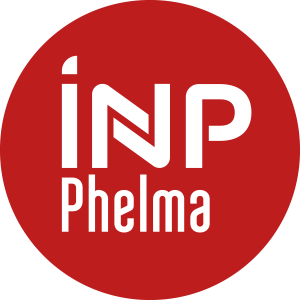Number of hours
- Lectures 16.0
- Projects 0
- Tutorials 8.0
- Internship 0
- Laboratory works 32.0
ECTS
ECTS 4.0
Goal(s)
Understand the main methods of solving differential equations and partial differential equations, for the modeling of physical phenomena.
Contact Jean-Christophe TOUSSAINTContent(s)
In units of 4h as lecture/excercises/computer lab)
Course presentation - Introduction to scientific modelling - Introduction to Matlab (computer lab, 4h)
Solving ODEs, discrete step methods (2h lecture, 2h excercise, 4h computer lab)
Numerical integration: Newton-Cotes, Gauss, polynomial interpolation (2h lecture, 2h excercise, 4h computer lab)
Resolution of linear systems (direct and iterative methods) and non-linear systems. (2h lecture, 2h lab)
Finite Difference Method: Implicit/explicit scheme, Von Neumann stability (2h lecture, 2h excercises, 8h computer lab)
Finite Element Method: Nodal / Edge Elements (4h lecture, 4h excercise, 12h computer lab)
Lecture, exercises and computer lab are being held in the same computer room using workstations. Matlab will be used as programming language. Course language: French.
Prerequisites
At the end of each chapter, a 15' evaluation will be given.
These evaluations represent a maximum bonus of 2 points in the final grade.
Written exam of 3 hours in session 1
Course notes, course handouts, TD statements and TD answer keys allowed
All other documents are forbidden
College" calculators allowed
The grade for session 2 will replace the grade for session 1. The exam of the 2nd session may be an oral exam.
In case of an exam during a lockdown period, the evaluation will be done by a written exam of 3 hours, or by an oral exam by videoconference or will be replaced by a homework.
Evaluations par QCM à la fin de chaque chapitre : bonus de 2 points max
Examen écrit Session1 : DS1
Examen écrit Session 2 : DS2 ou ORAL
N1 = Note finale session 1
N2 = Note finale session 2
En présentiel :
N1 = DS1
N2 = DS2
En distanciel :
N1 = DS1
N2 = DS2
Commentaire :
P. LASCAUX & R. THEODOR : "Analyse numérique appliquée à l'art de l'ingénieur", Edition Masson, 2 tomes
G. DHATT & G. TOUZOT : "Une présentation de la méthode des éléments finis", Edition Maloine S.A., 2ème édition 1984
B. LUCQUIN & O. PIRONNEAU : "Introduction au calcul scientifique", Edition Masson, 1996



